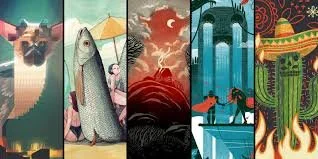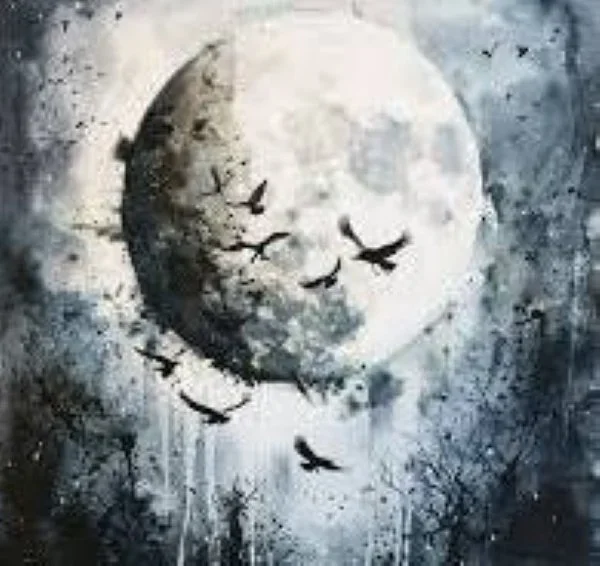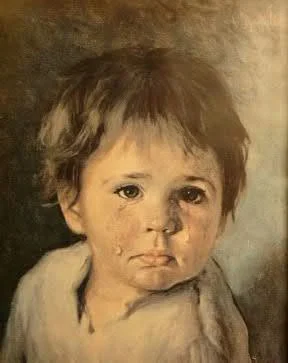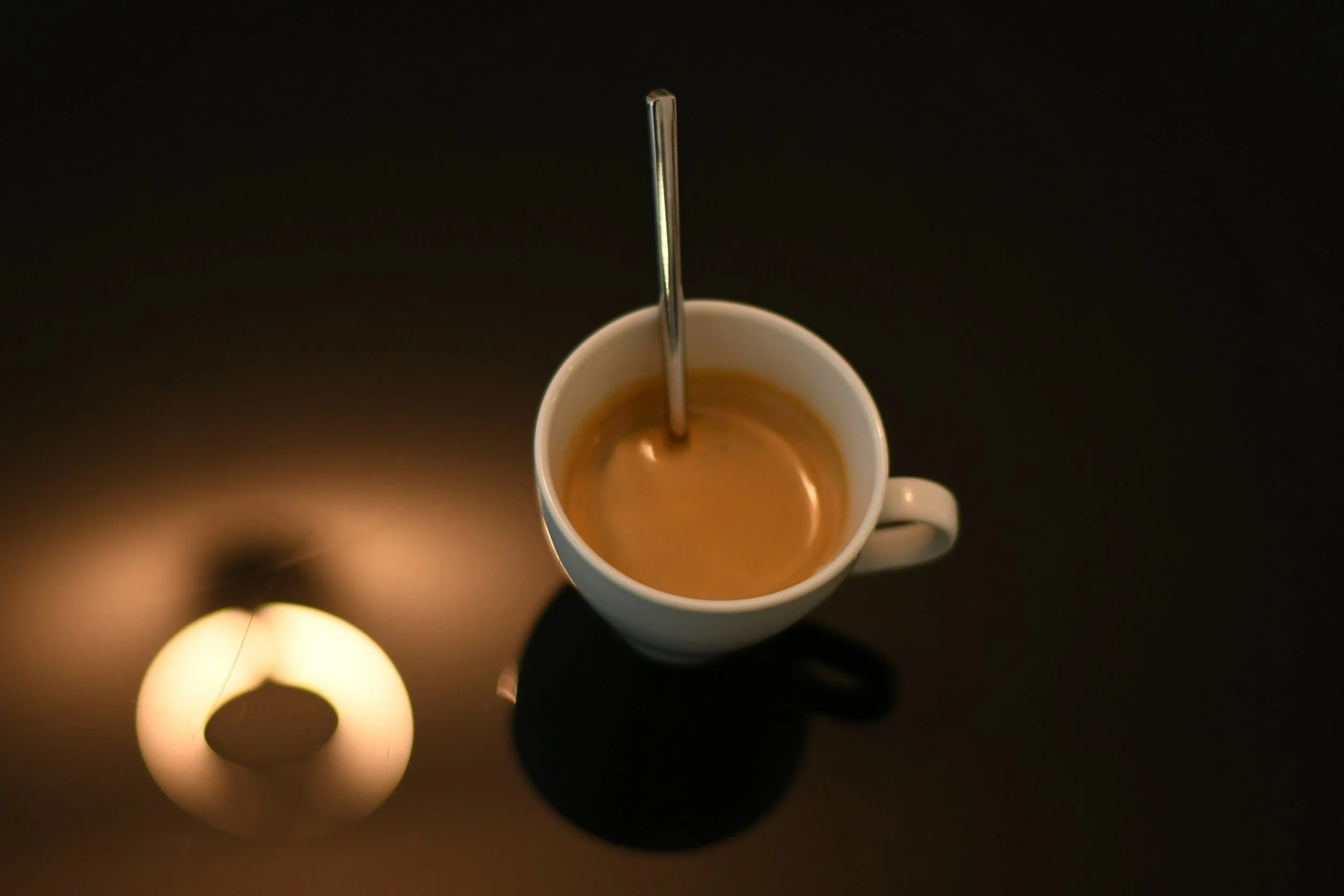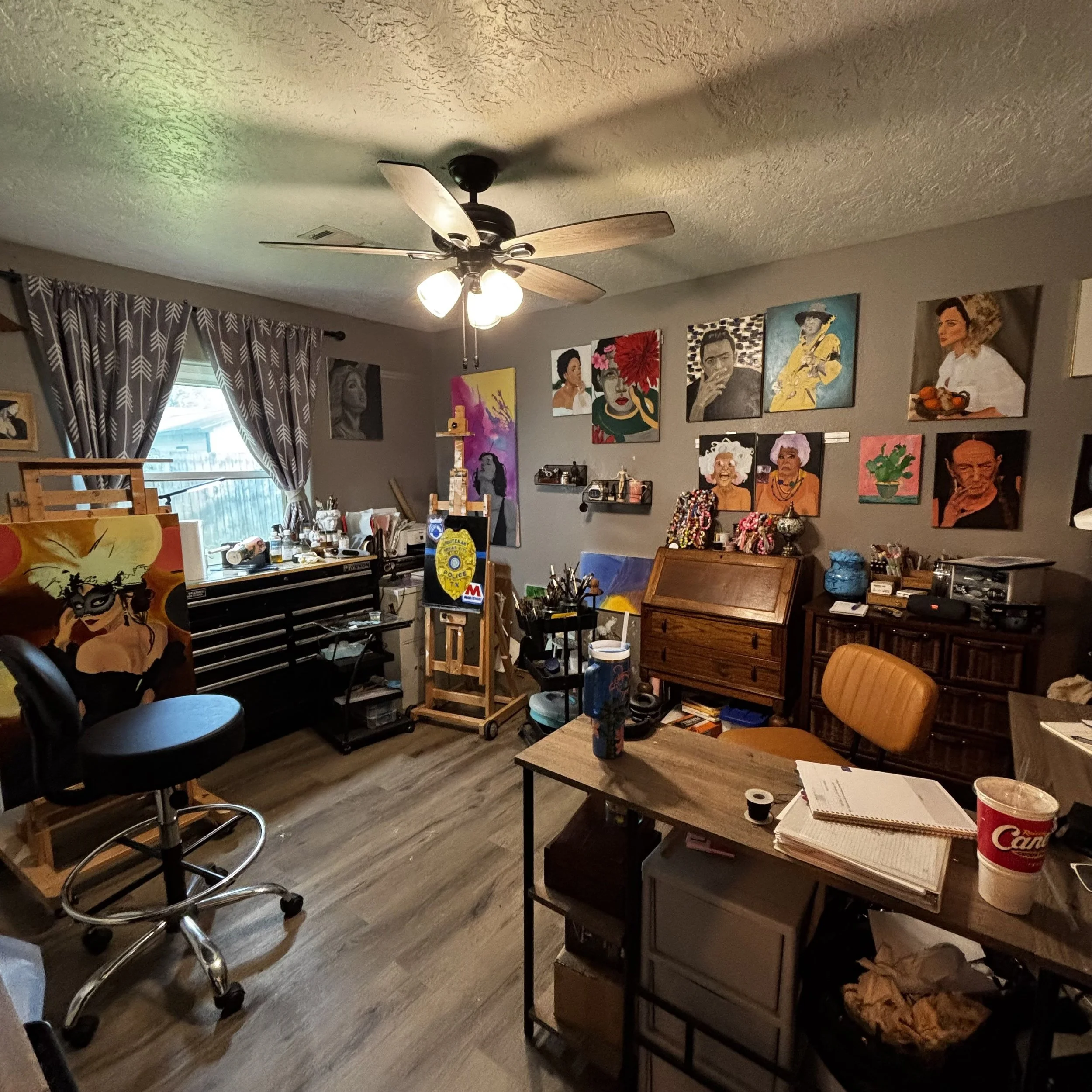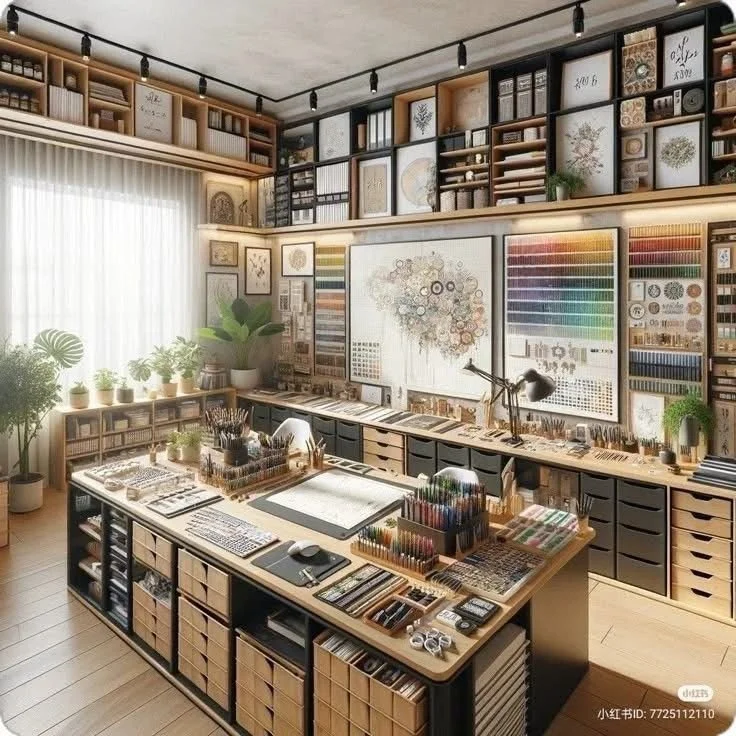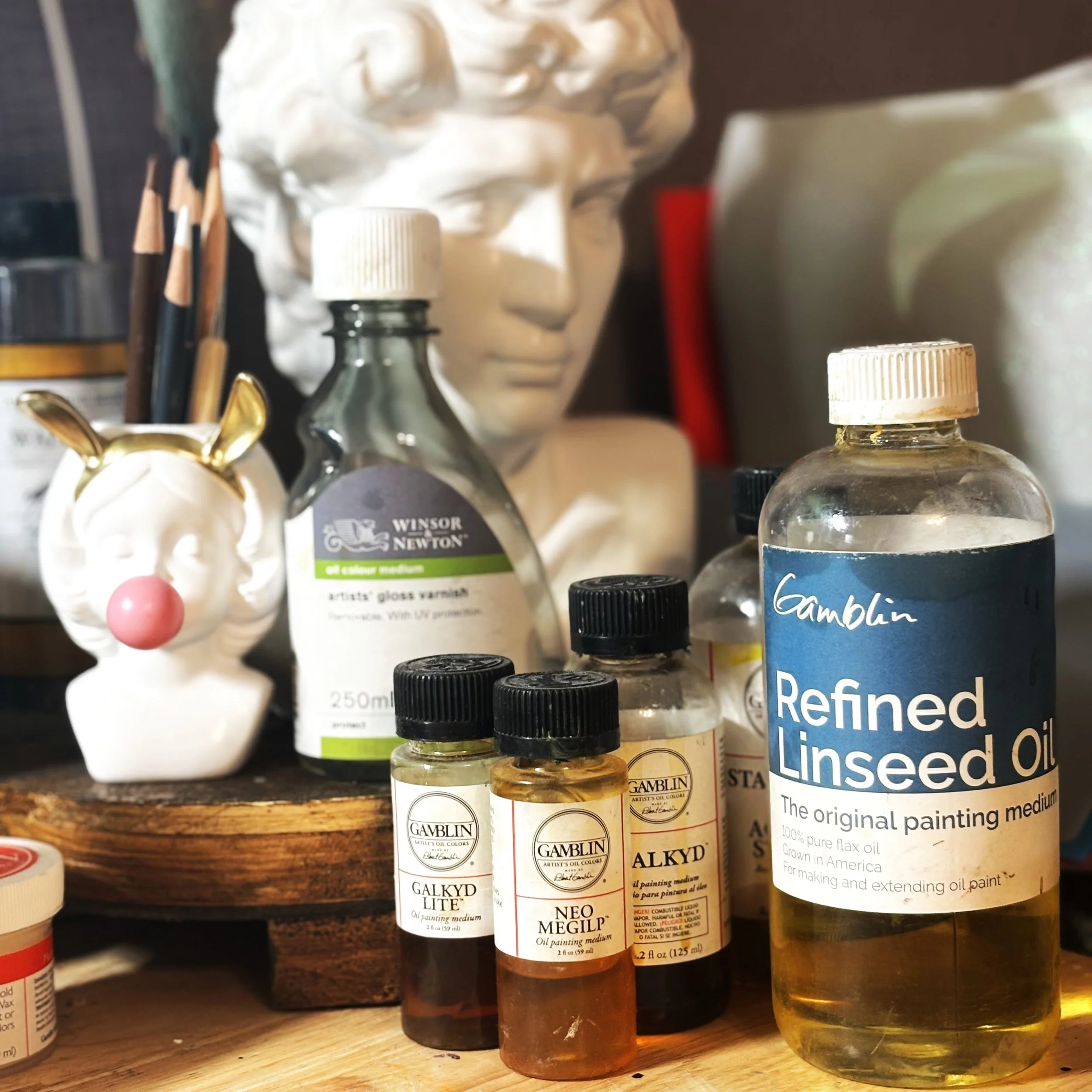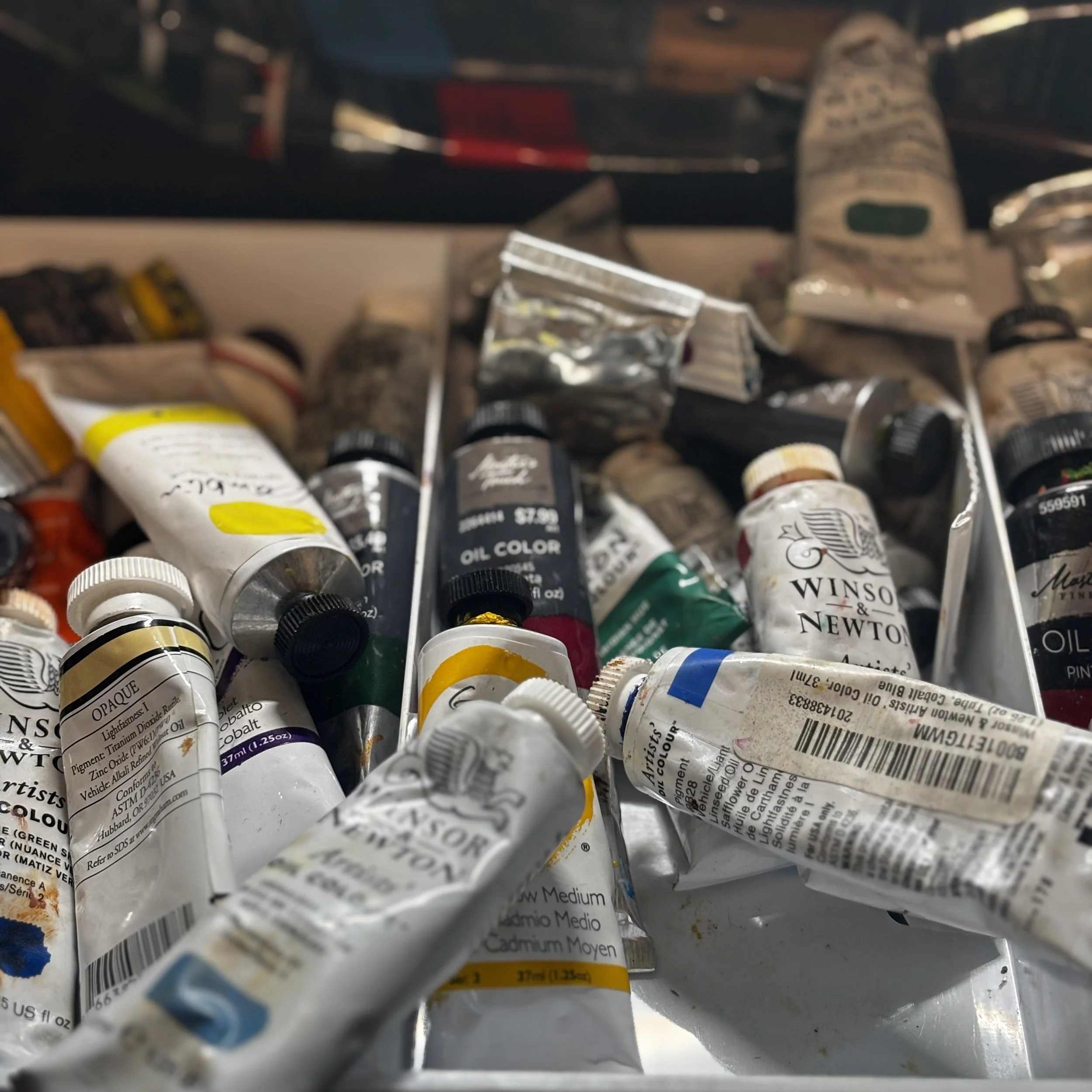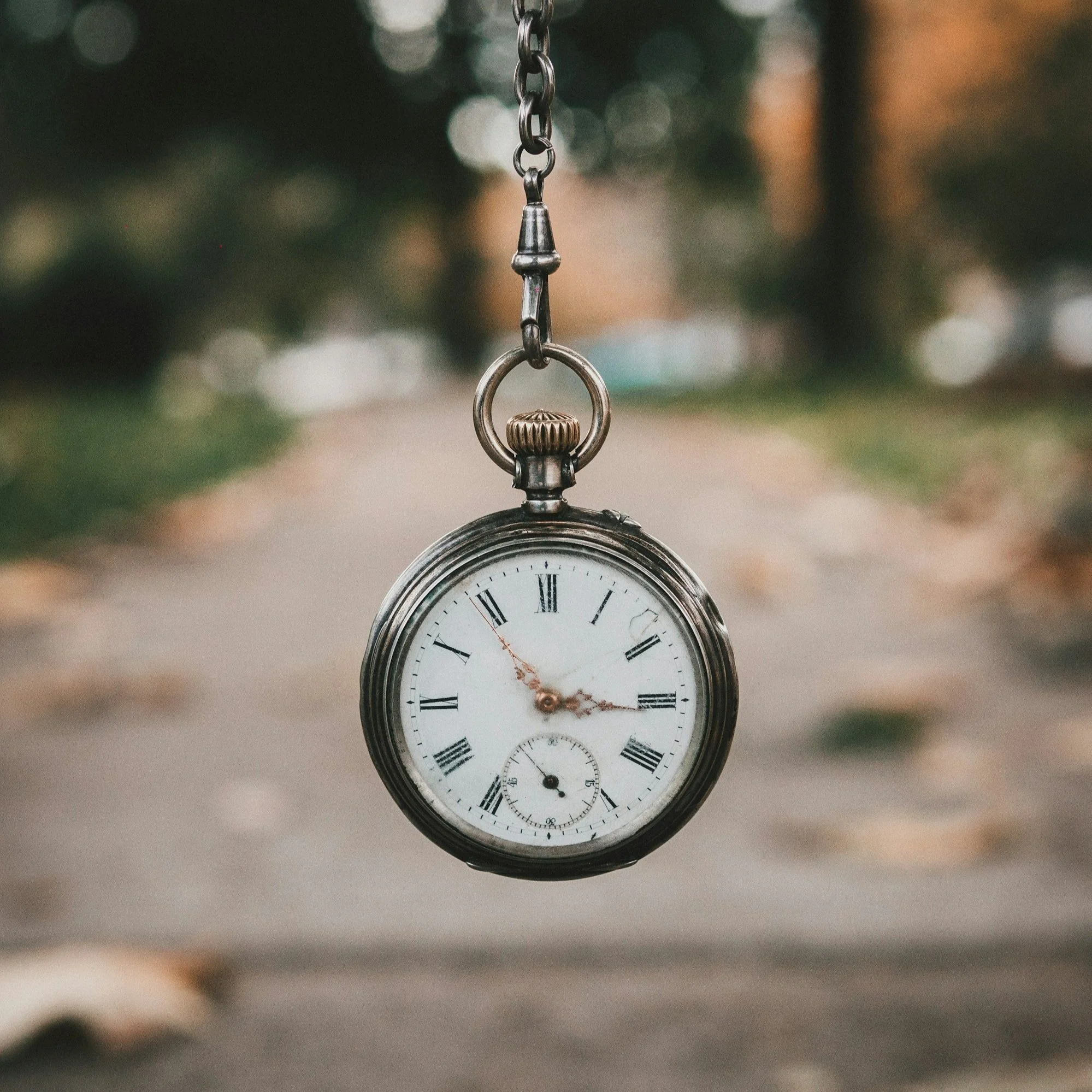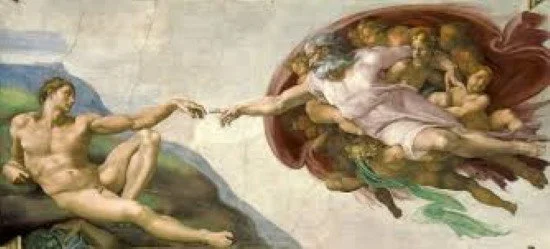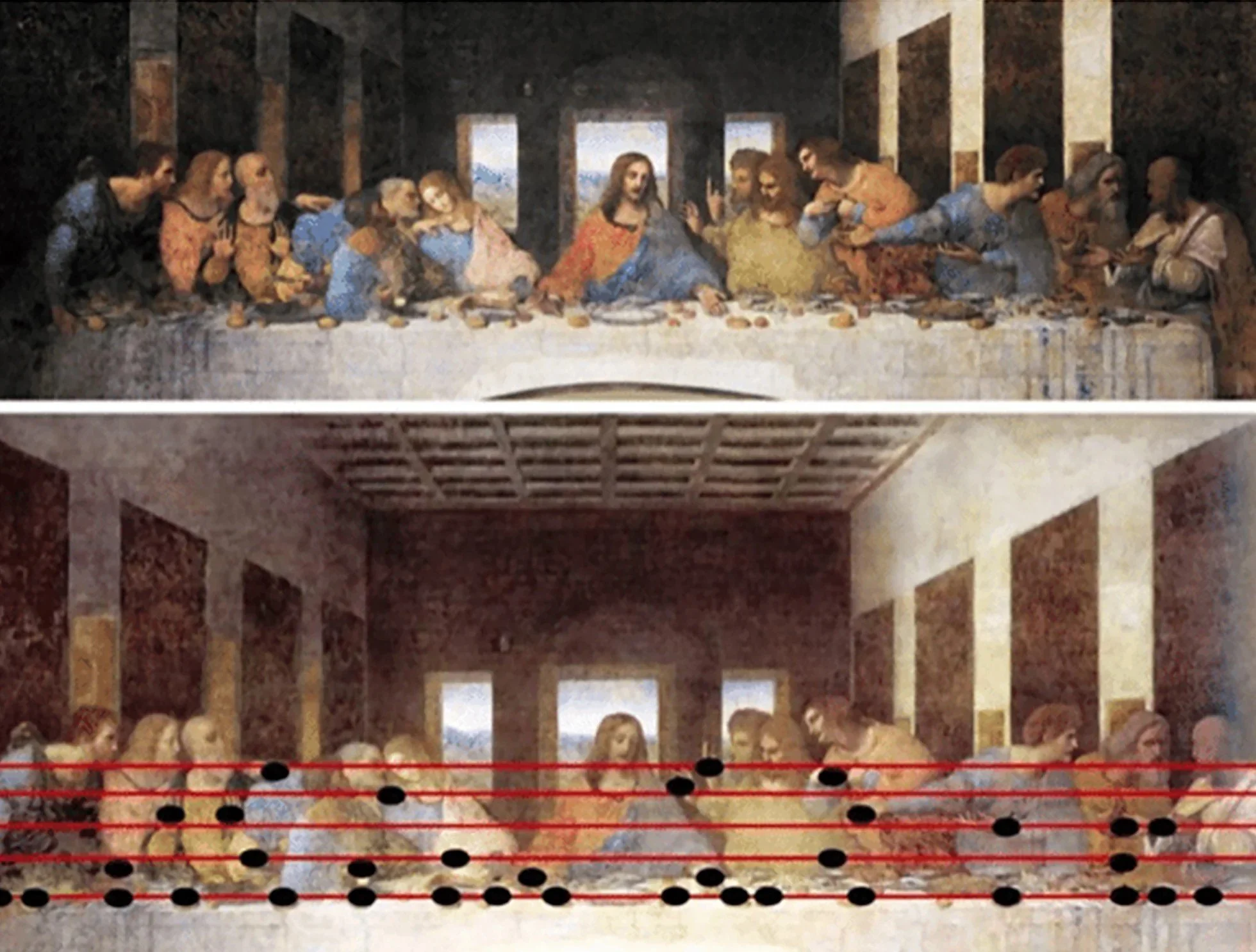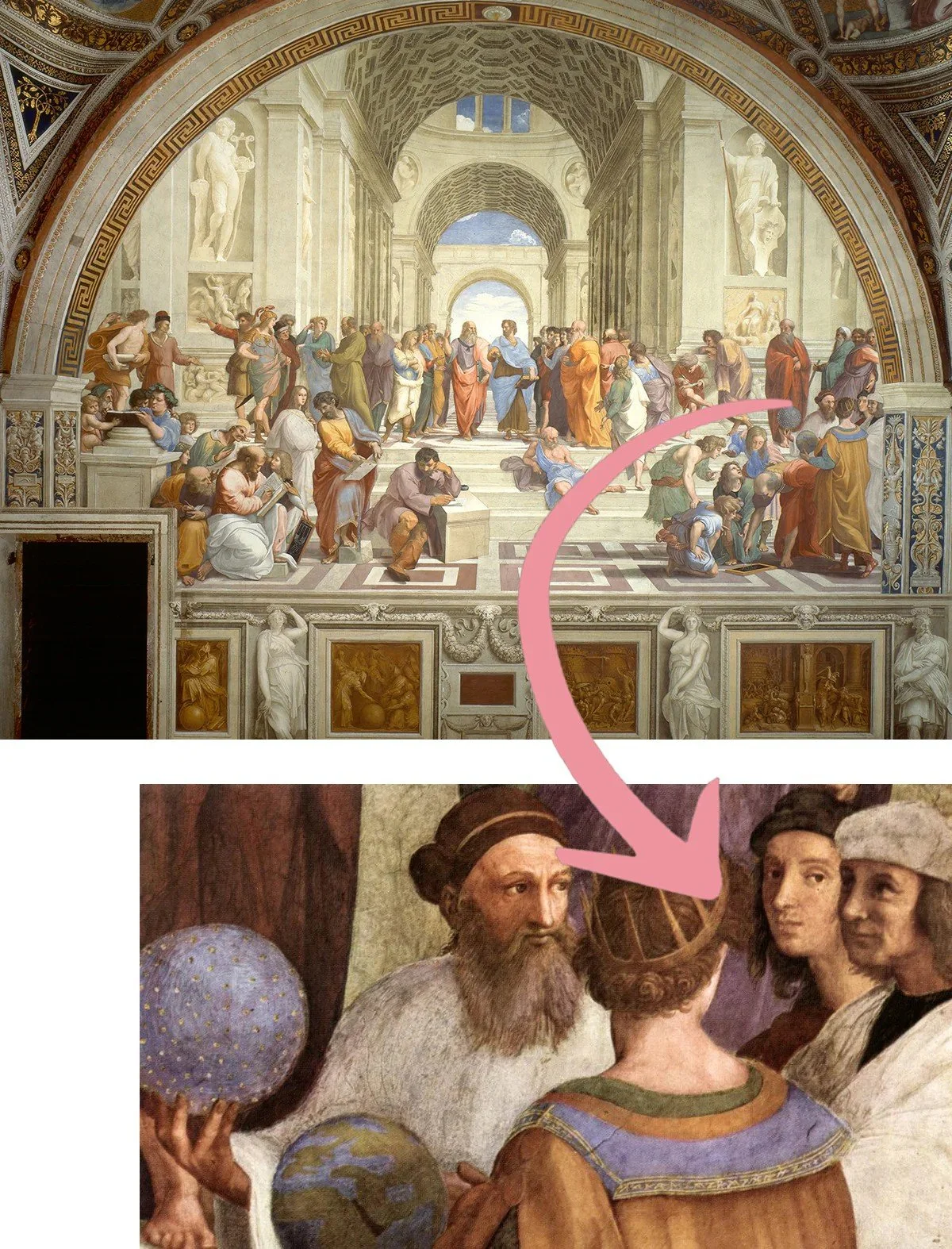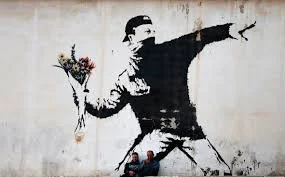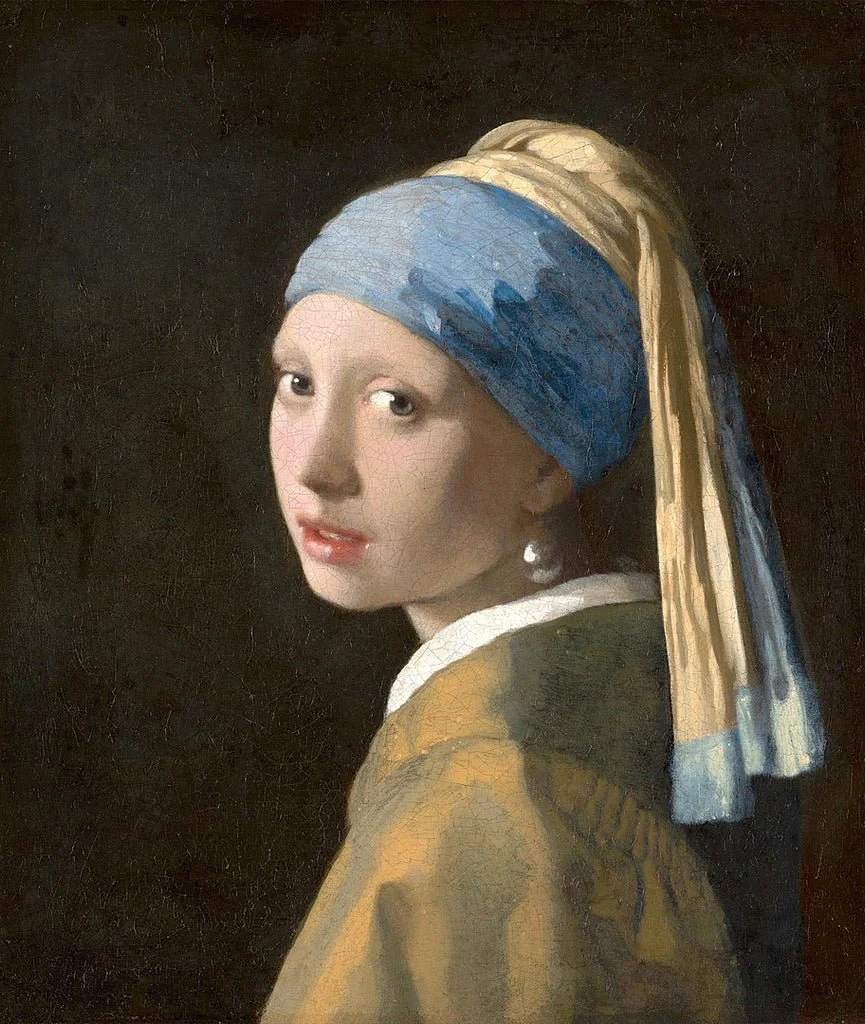The Gift of Creativity: Why Art Is the Best Present
When the holidays roll around, most of us start hunting for the “perfect gift.” Something thoughtful, something unique, something that lasts. And every year, I find myself coming back to the same truth: the best gift isn’t the newest gadget or a shopping cart full of sales—it’s creativity.
Whether it’s a handmade card, a painting that holds a story, or even a shared creative experience, art has a way of giving more than just an object. It gives meaning.
Art Is Personal
Store-bought gifts are nice, but art is one-of-a-kind. When you gift something handmade—whether it’s your own creation or a piece you’ve chosen from an artist—it carries a personal touch that can’t be replicated. It says, “I thought of you. I wanted to give you something no one else could.”
Art Lasts Longer Than Trends
Clothes fade. Gadgets break. But art endures. Paintings, sketches, even small crafts become part of someone’s space and memory. Every time they look at it, they remember not just the object, but the love and thought behind it.
Art Connects People
Art is a bridge. It carries emotions across time and space. When you give someone art, you’re not just handing them a gift, you’re sharing part of yourself, or part of the artist who made it. That connection deepens relationships in a way no store-bought thing can.
The Gift of Making Together
Sometimes the best gift isn’t a finished piece, but the experience of creating together. Painting ornaments, sketching in a coffee shop, making messy crafts with kids—those moments of shared creativity become memories far more valuable than anything wrapped in paper.
Why I Believe Art Is the Best Present
As an artist, I’ve seen firsthand the way people light up when they find a piece that speaks to them. It becomes more than just something to hang on the wall—it becomes part of their story.
That’s why I believe creativity itself is the best gift: it reminds us of who we are, connects us to each other, and gives us something beautiful to carry forward.
Final Thought
This December, as you’re searching for the right gift, consider giving art—whether it’s your own or something you’ve found. Because long after the wrapping paper is gone, the gift of creativity is what lingers, warms, and inspires.
What’s the most meaningful creative gift you’ve ever given—or received?
How People Have Treated Artists Throughout History (and My Own Journey)
Artists have always lived in a complicated space within society. Sometimes celebrated as visionaries, other times overlooked or misunderstood, the way artists have been treated throughout history often reflects the culture of the time. As I look back at the path of artists through the centuries, I can’t help but think about how my own experience echoes many of the same struggles and triumphs.
🎨 Ancient Times: Anonymous Creators
Anciet Egyptian Art
In ancient civilizations like Egypt or Greece, artists were rarely remembered by name. They created incredible works, but their role was closer to “craftsmen” than “genius.” I sometimes feel that echo today—when people see art as decoration rather than a voice, they miss the human being behind the brushstrokes.
👑 The Renaissance: Celebrated Geniuses
Renaissance Art
By the Renaissance, artists like Michelangelo and da Vinci began to be celebrated, even revered. They had patrons who invested in their talent. For me, finding patrons—people who believe in my work and its message—is still the most affirming part of being an artist. When someone connects with one of my paintings, I feel just a fraction of that Renaissance recognition, and it fuels me to keep creating.
🎭 The Romantic Myth of the Starving Artist
19th Century Art
The 19th century gave us the image of the starving artist—brilliant but unrecognized, struggling in poverty. Vincent van Gogh is the most famous example. Sadly, this myth still lingers today. I’ve had moments where I felt invisible or undervalued, pouring my soul into a canvas that people glance at for two seconds before walking away. But I’ve also learned that art isn’t only about applause—it’s about expression, healing, and sometimes just surviving.
💡 The 20th Century: Rebels and Outsiders
20th Century Art by Pablo Picasso
Artists of the last century broke rules, and society didn’t always know what to do with them at first. The Impressionists were mocked, abstract painters dismissed, and yet, decades later, their work changed art forever. I relate to that resistance. My own themes—like protecting innocence—don’t always fit into “pretty” art categories. Sometimes people shy away from difficult truths in paintings. But just like those rebels, I’ve realized that making people uncomfortable can also make them think.
🌍 Today: Artists in the Digital World
today’s Digital Art
Now, artists have social media and global platforms, but we also face the weight of algorithms and constant comparison. I’ve experienced both sides: the joy of someone discovering my work online, and the frustration of watching meaningful pieces get buried by fleeting trends. It’s a strange balance of vulnerability and resilience—one that I think artists across time would understand.
✨ My Takeaway
Looking back, I see how the way society treats artists has changed—and yet hasn’t. Artists have always struggled for recognition, fought to be understood, and worked to leave something behind that matters. My journey is a continuation of that story. Some days, I feel like an ancient craftsman, anonymous and overlooked. Other days, I feel like a Renaissance painter, seen and celebrated. Most days, I’m somewhere in between.
But no matter how the world treats us, one truth hasn’t changed: art matters because it carries pieces of our humanity forward. And that, I believe, is worth every brushstroke.
The Art of the First Thanksgiving: Fact vs. Fiction in Paintings
When you picture the “First Thanksgiving,” you might imagine a long wooden table covered with roast turkey, pumpkins, and pie, surrounded by smiling Pilgrims and Native Americans in perfectly coordinated outfits. That image is probably straight from a painting—but here’s the thing: much of what we “see” in art about the First Thanksgiving is more fiction than fact.
Let’s dig into how artists have shaped (and sometimes skewed) our view of that historic meal.
1. The Feast Didn’t Look Like a Norman Rockwell Painting
Freedom From Want
Norman Rockwell’s Freedom from Want (1943) is iconic—but it’s not historically accurate. The actual 1621 feast wouldn’t have had fine china, white linens, or even a formal dining table. Instead, it likely featured rough-hewn benches, outdoor eating, and a mix of English and Native foods such as venison, corn, shellfish, and seasonal vegetables.
2. Costumes Were… Creative
What we imagine Pilgrims looked like
Many paintings show Pilgrims in black-and-white outfits with shiny buckles, but those details come from fashion decades later. In reality, Pilgrims wore earth-toned clothing made from wool and linen, and buckles were rare. Native Wampanoag guests wore clothing suited to the season—likely deerskin garments, mantles, and beadwork—not the feathered headdresses we often see in romanticized paintings.
3. Everyone Wasn’t Sitting Together in Perfect Harmony
Art often depicts one long table with everyone gathered side-by-side. The truth is more complex. The feast lasted three days, and people likely moved around in smaller groups. Language barriers and cultural differences were very real, even amid moments of celebration. Paintings often smooth over these complexities for a “united” image that fit the storytelling needs of the time.
4. Why the Myths Persist
Many First Thanksgiving paintings were created centuries later, during periods when America wanted a unified national story. Artists painted scenes of cooperation and abundance to inspire pride and nostalgia. While these works are beautiful, they’re more about cultural storytelling than strict history.
5. Looking at the Art Differently
The next time you see a First Thanksgiving painting, look beyond the turkey and buckles. Ask yourself: When was this painted? Who painted it? What story were they trying to tell? Art isn’t just about what’s on the canvas—it’s also about the world in which it was made.
Final Brushstroke
The First Thanksgiving as we “see” it in art is a blend of history and imagination. By understanding the difference, we can appreciate these paintings for what they are—beautiful, symbolic pieces that say as much about the artist’s era as they do about 1621.
Why We Still Need Art (Even If You Think You Don’t)
When was the last time you paused to really look at something beautiful? Not a phone screen, not an ad, not a quick scroll—but something created just to make you feel.
That’s art. And whether we realize it or not, it’s stitched into every part of our lives.
Art Has Always Been There
Since the first cave paintings, people have been leaving pieces of themselves behind in color, shape, and story. Art was our first way of saying: “I was here. I felt something. I mattered.”
Even today, when I pick up a brush, I feel connected to that same timeless thread. My paintings may look different than ancient carvings, but the urge is the same: to create, to express, to leave something behind.
Art Isn’t Just for Museums
Here’s the secret: art isn’t only about gallery walls and price tags. It’s in the doodle on a notebook, the graffiti on a brick wall, the playlist that carries you through a rough day.
We don’t always notice it, but we’d feel its absence instantly. Imagine a world with no songs, no colors on walls, no stories told through movies or paintings. Pretty bleak, right?
Why People Say They “Don’t Get Art”
I hear it a lot: “I don’t get art.” But here’s the truth—art isn’t meant to be “gotten.” It’s meant to be felt. You don’t need a degree to stand in front of a painting and say, “This makes me happy,” or “This makes me uncomfortable.” That’s art working exactly as it should.
My Own Why
What I am working on at the moment
For me, art isn’t just about beauty—it’s about protecting innocence, sparking conversations, and making sure the things that matter most aren’t forgotten. Every painting I make is part of that mission.
And maybe that’s the real reason art matters: it reminds us we’re human.
Final Thought
The next time you pass a mural, a handmade craft, or even a simple sketch, pause for a second. Someone put a piece of themselves there for you to notice.
Because in the end, art isn’t just something you look at—it’s something you carry with you.
Haunted Famous Paintings: Creepy Canvases with Chilling Stories
October is the season for all things spooky—ghost stories, haunted houses, and eerie legends. But did you know that some famous paintings have their own haunted reputations? Across the world, there are works of art rumored to carry curses, bring bad luck, or even make viewers feel uneasy. Whether you believe in the paranormal or not, these stories add a haunting twist to art history.
1. The Crying Boy – Giovanni Bragolin
The Crying Boy by Giovanni Branolin
Perhaps one of the most infamous “cursed” paintings, The Crying Boy gained notoriety in the 1980s when reports surfaced of homes catching fire—yet the painting surviving unscathed in the ruins. While skeptics chalk it up to coincidence, believers say the work carries misfortune. Today, copies of the painting still send shivers down some collectors’ spines.
2. The Hands Resist Him – Bill Stoneham
The Hands Resist Him- Bill Stoneham
Dubbed “the most haunted painting in the world,” The Hands Resist Him shows a young boy standing beside a life-sized doll, with ghostly hands pressing against a glass door behind them. When it was first listed on eBay, the sellers claimed the figures moved at night and that people who viewed the painting experienced strange phenomena. Now it’s locked away, but the legend lives on.
3. Portrait of Bernardo de Gálvez – The Galvez Hotel, Galveston, Texas
Portrait of Bernardo de Galvez
Visitors to the Galvez Hotel report that the painted eyes of Bernardo de Gálvez seem to follow them. Some claim they’ve captured strange reflections in photographs of the work. Guests have even said they feel a heavy, watchful presence when walking by. Hotel staff encourage asking “permission” before taking a picture, just in case.
4. Love Letters – Richard King
Love Letters
Hanging in the Driskill Hotel in Austin, Texas, Love Letters depicts a little girl holding flowers. Many guests have said the painting’s eyes follow them down the hallway, and some even feel an icy chill when passing by. The eeriness is amplified by the fact that the girl resembles the hotel owner’s daughter, who tragically died young.
I personally used to have a copy of this painting, that my aunt gave me. I had to get rid of it because I had so many people come over and tell me that, that picture gave them the creeps.
Why We Love These Stories…
Whether you’re a believer in the supernatural or not, haunted art stories add a delicious layer of mystery to the art world. They remind us that paintings aren’t just pigment on canvas—they carry history, emotion, and sometimes a touch of the unexplained.
So next time you visit a museum or gallery, take a closer look… you never know who—or what—might be staring back.
Balance in Everyday Life – Practical Tips Inspired by the Equinox
An equinox is the moment in the year, occurring twice annually in March and September, when the Earth's axis is tilted neither toward nor away from the sun, and the sun is directly over the equator. (for those who didn’t know)
An equinox is the moment in the year, occurring twice annually in March and September, when the Earth's axis is tilted neither toward nor away from the sun, and the sun is directly over the equator. (for those who didn’t know)
On September 22, the world pauses for a moment of perfect balance. The autumn equinox marks the time when day and night are nearly equal, reminding us that life, too, is a constant dance between light and dark, work and rest, holding on and letting go.
I’ve always loved this time of year—not just for the fall colors and cozy sweaters, but for the quiet lesson nature teaches us: balance is possible, even if only for a moment. And maybe that’s all we need—moments of balance that carry us forward.
Here are a few practical ways I’ve been weaving that equinox-inspired balance into everyday life:
1. Balance Work and Rest
Take a break with some tea or coffee
It’s easy to push through, telling ourselves we’ll rest later. But rest isn’t the opposite of productivity—it’s part of it. I’ve started giving myself “mini equinoxes” during the day: equal parts focus and pause. A couple of hours painting, then a walk. A burst of crafting, then coffee and quiet. The work feels better when the rest is honored too.
2. Balance Digital and Real Life
Screens are part of daily life, but they can tilt us out of balance quickly. I’ve been setting boundaries: no phone during meals, no scrolling before bed. Replacing some screen time with sketching or simply sitting outside helps me feel more present.
3. Balance Giving and Receiving
As an artist, I pour a lot of myself into my work—creating, sharing, giving. But the equinox reminds me that receiving matters too. Allowing myself to accept kindness, compliments, or even just still moments keeps me from burning out.
4. Balance Routine and Spontaneity
Meet up with Friends
Structure grounds us, but too much can feel suffocating. I try to keep a flexible routine—studio time in the morning, but leaving space in the afternoon for a spontaneous coffee with a friend or a new idea that grabs me. That mix keeps life both steady and surprising.
5. Balance Light and Shadow
Nature doesn’t shy away from darkness—it’s what makes the light glow brighter. The same is true in life. Instead of avoiding the hard days, I’ve learned to see them as part of the whole picture. Just as I layer shadows in a painting, those challenges add depth and meaning to the brighter moments.
Final Thought
The equinox doesn’t last long—it’s just one day of equal light and dark before the tilt shifts again. Balance in life is the same: not permanent, but fleeting, something we create in moments.
Maybe the real lesson is this: we don’t need perfect balance all the time. We just need to notice the moments when it arrives—and carry their calm into the rest of our days.
How do you create balance in your everyday life? I’d love to hear your own equinox-inspired custom .
15 Surprising September Trivia & Fun Facts
September is a month of change—the air starts to cool, leaves begin to turn, and many of us start to shift from summer energy into fall coziness. But beyond pumpkin spice and back-to-school, September is packed with fascinating history, fun traditions, and unique little-known facts. Here are 15 surprising bits of September trivia to share at your next gathering or just enjoy for yourself!
Arts & Culture
1. September 1, 1972 – Bobby Fischer became the first American to win the World Chess Championship, defeating Boris Spassky.
2. September 9, 1850 – California officially entered the Union as the 31st U.S. state.
3. September 13, 1814 – Francis Scott Key wrote The Star-Spangled Banner while witnessing the Battle of Baltimore.
4. September 14, 1741 – George Frideric Handel completed his famous Messiah oratorio in just 24 days.
5. September 19, 1893 – New Zealand became the first country in the world to grant women the right to vote.
History & Events
6. September was originally the seventh month of the Roman calendar (from septem, meaning “seven”), before January and February were added.
7. Labor Day in the U.S. is celebrated on the first Monday of September, honoring the contributions of workers.
8. September 2, 1666 – The Great Fire of London broke out, lasting three days and reshaping the city.
9. September 5, 1977 – NASA launched Voyager 1, which is now the farthest human-made object in space.
10. September 15, 1821 – Five Central American countries—Costa Rica, El Salvador, Guatemala, Honduras, and Nicaragua—gained independence from Spain.
Fun & Unique Facts
11. September’s birthstone is sapphire, a gem symbolizing wisdom, loyalty, and protection.
12. The full moon closest to the autumn equinox is called the Harvest Moon, often falling in September.
13. The September equinox (Sept 22–23) marks the official start of fall in the Northern Hemisphere.
14. More people are born in September than in any other month in the U.S.—especially in the first two weeks!
15. September is National Honey Month in the U.S., a sweet time to celebrate bees and their golden gift.
Final Thoughts
September isn’t just about the shift into fall—it’s a month rich with history, milestones, and traditions. From the music of Handel to space exploration, from women’s suffrage to honey harvests, September proves that change can be both powerful and inspiring.
What’s your favorite September fact—or do you have a special tradition you celebrate this month? Share it in the comments!
Confessions of a Chronically Messy Studio
Every splatter and pile tells a story, and when I walk into that chaos, I know exactly who I am—a working artist, in the middle of making something real.
Some artists have pristine, sunlit studios with everything in its perfect place—a gentle, minimalist haven that smells faintly of lavender and success.
Mine smells like linseed oil, coffee, and mild panic.
Welcome to my chronically messy studio.
My Messy Studio
The Myth of the Tidy Artist
If you’ve ever seen Instagram photos of an artist’s studio looking clean and airy, let me tell you a secret: they cleaned it for the photo. And by “cleaned,” I mean they shoved all the chaos into one corner and cropped it out.
A real working studio is like a creative crime scene. Evidence of inspiration everywhere: smears of paint on the walls, glitter in suspicious places, and brushes that look like they’ve been through a war.
NOT My studio
My Studio Rules (That I Absolutely Never Follow)
Put brushes back where they belong. (Or jam them in a jar with 37 others and hope for the best.)
Wipe down palettes after each session. (Or let yesterday’s colors become part of today’s “new palette inspiration.”)
Label supplies neatly. (Or just yell, “WHERE IS MY WHITE PAINT?” until it answers.)
Most of My Brushes, but not all…. Yeah Im a brush hoarder
The Creative Chaos Theory
Here’s the thing: I do know where everything is… sort of. That pile of scrap paper? Reference sketches. The mysterious jar of cloudy liquid? Brush rinse water… hopefully.
A clean space might be calming, but my mess is alive. It’s constantly shifting, evolving—like a lava lamp, but with more chance of stepping on a push pin.
More of the Chaos….
Why I’ll Never Be Truly Tidy
Sure, I could scrub it down, line up my paint tubes in rainbow order, and create a studio worthy of a Pinterest board. But here’s the truth:
Mess means movement.
Mess means something is happening.
Mess means a project is alive.
Every splatter and pile tells a story, and when I walk into that chaos, I know exactly who I am—a working artist, in the middle of making something real.
Final Confession: If my studio is ever spotless, it’s probably because I’m avoiding starting a new painting… or I’m expecting company.
🎨 Painting Stanley Cups with Acrylics: Chaos, Color, and a Whole Lotta Epoxy
🎨
Ah yes, the painted Stanley Cup—the perfect blend of hydration, personality, and just enough glitter to be considered a weapon in direct sunlight. If you’ve ever wondered what it’s like to hand-paint a reusable tumbler and then seal it with epoxy, let me take you on a journey full of acrylic dreams, sticky fingers, and the occasional emotional breakdown. 🫠
☕ Step 1: Choose Your Cup, Choose Your Chaos
It all starts innocently enough. A clean Stanley, a blank canvas of hydration. You hold it in your hands and think, “This is going to be the cutest cup anyone’s ever seen.”
That optimism lasts about 10 minutes—right around the time you realize your reference photo looked way easier on Pinterest. But we’re committed now. No turning back.
🎨 Step 2: Prime It Like You Mean It
No one likes a flakey paint job (unless it’s on purpose and part of your rustic-chic aesthetic). So first, you scuff that sucker with sanding pads like it owes you money, wipe it down like a crime scene, and give it a layer of primer that hopefully sticks.
Bonus tip: If you forget this step, your paint will peel off faster than a bad sunburn. Ask me how I know. 🙃
✍️ Step 3: Paint Like Your Life Depends On It
Now comes the fun part. Acrylic paint, brushes, sponges, maybe even your fingers if things get wild. Whether you're doing flowers, cartoon characters, leopard print, or a chaotic mashup of all three, this is where the magic happens.
Pro tip: You will talk to the cup. It’s normal. You will also paint something beautiful, only to realize you were holding the cup upside down. Again—normal.
💅 Step 4: Let It Dry... And Then Let It Dry Again
You think it’s dry. You touch it. It lies. Let it dry anyway. Go do laundry, watch a show, rethink all your life decisions, and then come back.
🧪 Step 5: The Epoxy Event (AKA The Sticky Situation)
Here comes the real fun. Epoxying your painted Stanley is like sealing your soul inside a clear, glassy tomb. But shiny! And dishwasher safe!*
(*Just kidding. Hand wash only, forever. Like it's made of gold.)
You mix Part A and Part B of your epoxy like a mad scientist, hoping you don’t accidentally breathe too deeply or get it on your skin and become one with the resin forever.
Then you carefully pour, spread, rotate, babysit, and spin that cup like you're auditioning for a pottery show. For the next several hours, your entire personality becomes “checking the cup for dust and bubbles.”
⚠️ Step 6: The Waiting Game
Epoxy cures slowly. Like, glacially. While it sets, you’ll:
Worry if you mixed it right.
Panic that you missed a spot.
Text a friend about the one tiny hair that somehow got under the resin.
But once it’s done… oh. OH. She shines. She glows. She looks store-bought. Nay—better than store-bought. You made her with love and mild panic.
🏁 Final Thoughts: Is It Worth It?
YES. Every brushstroke, every speck of glitter, every epoxy-induced emotional spiral—worth it. Because nothing beats the look on someone’s face when they see their custom-painted cup and say, “You made this?!” 😍
So if you’re thinking about painting your Stanley, do it. Embrace the mess. Channel the chaos. And always, always double-check which way is up before you start painting.
Need a custom cup? Want me to epoxy your existing one? I got you! Send me a message or email me at J.Erin.Artwork@gmail.com. Just remember: all hand-painted cups are one-of-a-kind, just like your hydration habits.
Oil Painting: The Glorious, Messy Art of Pretending You Know What You're Doing
If you've ever wanted to feel like a misunderstood genius while standing in front of a canvas yelling “WHY WON’T THIS ORANGE MIX RIGHT?!”, oil painting is the hobby for you.
So you want to try oil painting? Fantastic choice. Welcome to the world of slow drying, weird smells, permanent stains, and dramatic flair.
If you've ever wanted to feel like a misunderstood genius while standing in front of a canvas yelling “WHY WON’T THIS ORANGE MIX RIGHT?!”, oil painting is the hobby for you.
What Is Oil Painting, Really?
Oil painting is when you take powdered pigments and mix them with oil (usually linseed, not olive — don’t get cute). It dries slower than your Wi-Fi on a rainy day, but that just means you have plenty of time to overthink every brushstroke. It's like regular painting, but in slow motion... forever.
What You Think You Need vs. What You Actually Need
What you think:
A beret
A glass of red wine
A tortured soul
What you actually need:
Oil paints (not the ones from your aunt’s basement from 1983)
Brushes that aren’t secretly from a dollar store makeup kit
Canvas or a surface that isn’t just your wall
Paper towels — lots of them
Solvent that doesn’t smell like you’re cleaning a crime scene
Bonus: A strong sense of humor and no attachment to your favorite t-shirt.
Expectation VS. Reality
Paint majestic mountain scene End up with weird potato hill
Mix perfect skin tone Accidentally invent new shade called “Unwell Peach”
Gracefully blend colors Accidentally erase entire painting
Clean brushes like a pro Smear ultramarine blue across your face, & floor,
Common Beginner Thoughts While Oil Painting
"This is going great!"
"Oh no."
"Why is it STILL wet?"
"Did I just make mud?"
"Maybe I’ll just become a digital artist instead..."
"Wait... I kinda love this."
Top Tips You Didn’t Ask For But Need Anyway
Don’t eat the paint. It’s not food. Even if it’s cadmium red and looks like strawberry frosting.
Read the labels. Some pigments are more toxic than your ex.
It doesn’t have to be perfect. It just has to exist.
Your first painting might suck. That’s the tradition. Own it.
Always wear pants you hate. You will sit on your palette at some point.
What Should You Paint?
A pear that looks suspiciously like a butt
A dramatic portrait of your dog
A mysterious blob you claim is “abstract”
A moody landscape that captures your current existential dread
Yourself, but way cooler and with better eyebrows
Bonus Round: Cleaning Up
Oil painting cleanup is a full-contact sport. It involves:
Swearing
Wondering why you didn’t just use acrylics
Finding paint in places paint should never be
Googling “can I use salad oil to clean brushes” (Answer: no, but points for creativity)
Final Thoughts: Embrace the Chaos
Oil painting is not for the faint of heart. It’s for the passionate, the curious, and the folks who enjoy a little drama with their art. You’ll get messy. You’ll question your life choices. You’ll make things that look nothing like what you intended… and that’s kind of the point.
Because behind every great oil painting is a person who started with a terrible one and just kept going.
So grab a brush, channel your inner mess, and paint like no one’s watching (because if they are, they’re probably impressed and slightly confused).
How to Avoid Creative Burnout
Creative Burnout: How to Recognize and Overcome It
Creative burnout is a real challenge that many artists face at various points in their careers. After years of pouring passion and focus into your work, it’s normal to feel drained, uninspired, or stuck. Recognizing burnout early and addressing it can make the difference between a temporary slump and a prolonged creative block. Here are some effective strategies to help you rejuvenate your creative spirit.
Creative Burnout is real….
1. Take Intentional Breaks
Sometimes the best way forward is to step back. Set aside your brushes and pencils for a few days or even weeks. Use this time to engage in non-artistic activities you enjoy—reading, nature walks, or simple relaxation. Giving your mind and hands a rest allows your creativity to recharge.
2. Change Your Environment
A change of scenery can work wonders. Visit galleries, museums, or new neighborhoods. Rearrange your studio space or work outdoors. New stimuli spark fresh ideas and renewed energy.
You never know where inspiration might be!
3. Experiment with New Mediums or Techniques
If you’re used to working in oils, try watercolor or charcoal. Experimenting shifts your perspective and rekindles enthusiasm. Sometimes, play is the best antidote to burnout.
4. Set Small, Manageable Goals
Creative burnout often comes from overwhelming expectations. Break your projects into smaller tasks and celebrate small victories. This makes the process less daunting and keeps motivation alive.
5. Connect with Other Artists
Join artist groups, attend workshops, or participate in creative forums. Sharing struggles and successes creates a support system, providing both accountability and inspiration.
6. Practice Mindfulness and Self-Care
Prioritize your mental and physical health. Regular exercise, meditation, and sufficient sleep improve focus and emotional resilience, crucial for sustained creativity.
Meditate, pray, go for a walk, get a pedicure, read a couple of chapters of a good book… so many self care ideas out there
7. Reflect on Your Artistic Journey
Take time to journal about what drew you to art initially. Revisiting your passion and purpose can reignite the spark that fuels your creativity.
keep an art journal…
Creative burnout doesn’t mean the end of your artistic journey—it’s a signal to slow down and nurture your creative well-being. Save this blog as a reference for when you feel your inspiration waning. Remember, your creative vitality is worth protecting and cultivating with care.
Explore my latest work and gallery showings on my website to see how I incorporate these principles into my own process. Let’s continue to grow and create, together.
Scenes Hidden in the Canvas
Art history is full of fascinating stories, but sometimes the most interesting tales are the ones that aren’t immediately obvious. Just like in some movies, Artist have been placing “Easter Eggs” in their paintings for years. Today we are going to explore some of these paintings, and together we can discover the hidden meaning behind them.
The Creation of Adam
The Creation of Adam, by Michelangelo
Outline of the Brain
Michelangelo’s masterpiece, The Creation of Adam, is a profound exploration of both the divine and the human condition, rich with symbolism that invites interpretation. Among the most compelling elements is the discernible outline of a brain nestled within the folds of God’s cloak. This shape has sparked intrigue: does it suggest the divine origin of human intelligence, serving as a reminder of the heavenly gift of reason bestowed upon mankind? Or is it a more pointed commentary, perhaps an admonition directed at the pope, urging him to "use his head"?
Adam’s Position
In this iconic scene, Adam is portrayed as a reclining figure, symbolizing humanity’s potential and open receptiveness to the divine essence of life. His relaxed posture conveys both vulnerability and an innate readiness to embrace the spark of creation. Adam’s outstretched hand, reaching towards God, signifies the intimate connection between the divine and humans, a gesture of longing for enlightenment and understanding.
Figures Around God
Surrounding God are figures that are often interpreted as representations of Eve and the future generations of humanity, born from the union of Adam and Eve. These figures not only reinforce the theme of creation but also highlight the continuity of life and the shared human experience. They frame the moment of divine touch, emphasizing the communal aspect of existence, where life is intricately linked to the act of creation itself.
In The Creation of Adam, Michelangelo masterfully intertwines artistry and philosophy, prompting viewers to reflect on the nature of existence, the relationship between God and man, and the profundity of divine intelligence illuminating human consciousness.
The Last Supper
The Hidden Code in the last supper, Leonardo da vinci
Some theorists believe that the hands of Jesus and the apostles, along with the placement of the bread, form musical notes that create a hidden melody. This intriguing notion invites us to ponder whether Leonardo da Vinci, in all his genius, could have ingeniously embedded a secret song within "The Last Supper." The strategic positioning of every element in this iconic painting raises questions about the intersection of art and mathematics, hinting at an underlying harmony that transcends mere visual beauty.
Da Vinci, known for his meticulous attention to detail and mastery of various disciplines, often sought to fuse science and art. His fascination with music, evidenced by his writings on the subject, may suggest the possibility of a deeper auditory experience encoded within the imagery. The alignment of gestures, expressions, and objects in the composition might indeed resonate with a rhythmic structure, encouraging viewers to explore beyond the surface.
As we contemplate this idea, we are reminded of the power of interpretation in art—how it can evoke sensory experiences that go beyond sight, firing the imagination and inviting a dialogue between the observer and the masterpiece itself. If there is indeed a melody hidden in the folds of the canvas, it speaks to da Vinci's unparalleled ability to weave complexity into simplicity, challenging us to listen with our eyes and feel the music that may echo through the ages.
The School of Athens
The School of Athens, by Raphael
Raphael’s The School of Athens (1509-1511) is indeed a masterpiece that showcases an assembly of great minds such as Plato, Aristotle, and Socrates, celebrated for their groundbreaking thoughts in philosophy and mathematics. Among these illustrious figures, Raphael humbly presents himself as a young scholar, positioned thoughtfully near the far right of the canvas. This inclusion serves not only as a personal statement but also as a reflection of his belief in the continuum of knowledge, suggesting that art and philosophy are intertwined threads in the tapestry of intellectual pursuit. His gaze towards the viewer encourages us to recognize the importance of creativity in contributing to the ongoing dialogue among scholars and thinkers throughout history. This subtle nod to his own identity in the context of such eminent company underscores the value of individual vision within the broader narrative of human thought.
Art Mysteries
Discover some mysteries of the Art world…and from the famous Robert Sack “For every mystery, there is someone, somewhere, w ho knows the truth. Perhaps that someone is watching. Perhaps… it's you."
Caravaggio’s Crime
Self-portrait of Caravaggio
The enigmatic life of Caravaggio is as compelling as the themes he explored through his art. Renowned for his ability to manipulate light and shadow, the Baroque painter captured raw emotion and human experience with a striking intensity. His works often feature dramatic scenes that unsettle the viewer, a reflection of his turbulent life marked by violence and escape.
Two years prior to painting The Beheading of St. John the Baptist, Caravaggio committed a grave crime, taking a life in what can only be described as a burst of fatal impulse. The artist fled to Malta, seeking refuge from the consequences of his actions. Ironically, during this period of fleeing justice, he was commissioned to create one of his most significant works. It is a powerful irony that in a state of desperation, he produced a piece that would become emblematic of his career.
What adds an extra layer of mystery to The Beheading of St. John the Baptist is the story of its completion. Caravaggio, who had long been embroiled in moral and legal chaos, signed his name in a manner as strange as his life; in the blood of the martyr he depicted. This singular act stands out in the history of art—his only known signature on a canvas, steeped in both symbolism and horror.
Theories swirl around this artwork; some suggest that Caravaggio not only captured a biblical event but allegorized his own descent into darkness. Did he see St. John as a reflection of himself, both victim and perpetrator? The ambiguity of intention in his art only enhances its allure, compelling art lovers to confront not just the aesthetic experience but the tumultuous psyche of the man who created it.
In seeking to unravel the complexities of Caravaggio's life and art, one is left with more questions than answers. The true nature of his guilt and the extent to which it informed his work remain elusive—just as the artist himself eluded capture. What is indisputable, however, is the indelible mark he left on the canon of art history, steeped in the shadows of both murder and genius.
Death of an Artist
Van Gogh self portrait
The circumstances surrounding Vincent van Gogh's death in July 1890 have long captivated historians and art enthusiasts alike, igniting debates over whether his demise was a tragic suicide or the result of foul play. Conventional narratives suggest that van Gogh's battles with poverty and profound mental health issues culminated in an act of self-destruction as he succumbed to the weight of his despair.
However, a closer examination reveals several inconsistencies that challenge the widely accepted theory. Notably, the weapon purportedly used in his death—a revolver—was never located, raising questions about the details of the incident. Additionally, eyewitness accounts recount that van Gogh encountered a pair of local teenagers just prior to the incident, who had reportedly been teasing him. Such testimony opens the door to speculation that van Gogh may have been the victim of a violent act rather than the perpetrator of his own fate.
Another theory posits the possibility of an accidental shooting, perhaps orchestrated in a moment of misconduct during the confrontation with the teenagers. This notion further complicates the narrative surrounding his death, suggesting that the true story may never fully come to light.
Ultimately, irrespective of the circumstances of his passing, the art world lost a visionary in van Gogh—a man whose innovative approach to color, form, and emotional expression would forever alter the course of modern art. His legacy endures, inviting continued reflection on the intersection of genius and suffering, and the profound impact he made within the realm of post-impressionism.
Who is Banksy?
Bethlehem, Israel painting
The enigma of Banksy encapsulates a unique blend of artistry and anonymity that captivates audiences worldwide. Emerging in the 1990s, Banksy's satirical graffiti has become a compelling commentary on society, politics, and culture, primarily manifesting in the vibrant streets of England. Although the works themselves testify to Banksy’s existence, the true identity of the artist remains shrouded in mystery, sparking endless speculation and intrigue.
Speculation surrounding Banksy's nationality leans towards British, given the geographical prevalence of their art. However, the lack of concrete evidence regarding the artist's identity allows room for imagination and endless theories. While some fervently seek to uncover the truth, a significant segment of Banksy's admirers argue that the mystique surrounding their identity enhances the allure of their work. This anonymity not only fosters intrigue but also serves as a protective shield, particularly given the politically charged nature of some pieces that could attract unwarranted scrutiny or repercussions.
There is a certain exhilaration in contemplating that the stranger next to you might be the very artist whose commentary challenges societal norms, provoking thought and dialogue through their vibrant art. This notion, that the face behind the famous stencil could be anyone—from a neighbor to a barista—adds an element of thrill to the urban landscape. Ultimately, some mysteries, including that of Banksy, are perhaps best left unsolved, allowing the art itself to remain the focal point of exploration and admiration.
Mona Lisa’s Smile
The Mona Lisa
the Mona Lisa, Leonardo da Vinci’s most celebrated masterpiece, stands as a testament to the intrigue and depth of Renaissance artistry. Her enigmatic expression, delicate smile, and seemingly sentient gaze captivate viewers, evoking a myriad of interpretations and emotions. One cannot help but feel the pull of her eyes, which appear to follow one throughout the room, as if assessing secrets buried deep within the observer’s soul.
The identity of this elusive woman has sparked debate and fascination for centuries, with prevailing theories suggesting she is Lisa Gherardini, the wife of a Florentine merchant. This revelation adds a layer of poignancy to her portrait, elevating her from mere subject to a symbol of universal beauty and mystery.
Contemporary scientific methods, such as infrared imaging, grant us unprecedented access to da Vinci’s creative process. These techniques unveil the layers beneath the surface, revealing initial sketches and alterations that illuminate the artist's meticulous approach. Each brushstroke and revision invites us deeper into the mind of a master.
Should you find yourself at the Louvre, take a moment to contemplate the Mona Lisa's enigmatic presence. Engage with her smile and strive to unravel the mysteries of her gaze; perhaps, in doing so, you will grasp the essence of what has entranced humanity for generations.
Girl with The Pearl Earring
The girl with the pearl earring
While not as widely recognized as the Mona Lisa, the enigmatic figure of the Girl with a Pearl Earring continues to capture the imagination of art enthusiasts and casual observers alike. Painted by the Dutch master Johannes Vermeer around 1665, this captivating portrait speaks volumes despite her lack of a smile. The girl's direct gaze, framed by a striking turban and a luminous pearl earring, invites viewers into a moment of intimate connection, rendering her both relatable and mysteriously distant.
The allure of the Girl with a Pearl Earring is amplified by the ambiguity of her identity. Unlike the well-documented life of Lisa Gherardini, the muse behind the Mona Lisa, the true identity of Vermeer’s subject remains a tantalizing mystery. Scholars and admirers have speculated on her origins, suggesting she may have been a family member, a model, or even a romantic interest of Vermeer. However, none of these theories have been definitively proven, leaving the enigma intact.
Vermeer himself is a figure shrouded in intrigue, with little known about his personal life. This lack of detail invites romantic notions—was the girl a silent confidante, a fleeting love, or perhaps a daughter destined to become the subject of an immortal masterpiece? The absence of concrete information allows each observer to project their interpretations, ensuring that the girl continues to resonate throughout the ages.
Ultimately, the enduring fascination with the Girl with a Pearl Earring lies not solely in her visual appeal but also in the mystery that surrounds her existence. In this way, she occupies a unique space alongside the Mona Lisa, forever inviting inquiry and contemplation, and urging us to reflect on the nature of beauty, connection, and the stories that remain unwritten.
Art History (but don’t quote me on that)
When we look back on history we just hear the boring sides. The part of history that is important but I like the juicy pieces of history. The funny parts of history...
Some juicy gossip on famous artist!
Michelangelo:
Notoriously grumpy & unsociable: Once wrote a poem complaining about his back pain from painting the Sistine Chapel, comparing himself to a "Syrian Bow"
Michelangelo : To Giovanni da Pistoia
1509
I've already grown a goiter from this torture,
hunched up here like a cat in Lombardy
(or anywhere else where the stagnant water's poison).
My stomach's squashed under my chin, my beard's
pointing at heaven, my brain's crushed in a casket,
my breast twists like a harpy's. My brush,
above me all the time, dribbles paint
so my face makes a fine floor for droppings!
My haunches are grinding into my guts,
my poor ass strains to work as counterweight,
every gesture I make is blind and aimless.
My skin hangs loose below me, my spine's
all knotted from folding over itself.
I'm bent taut as a Syrian bow.
Because I'm stuck like this, my thoughts
are crazy, perfidious tripe:
anyone shoots badly through a crooked blowpipe.
My painting is dead.
Defend it for me, Giovanni, protect my honor.
I am not in the right place - I am not a painter.
The Case of the Missing Nipple:
A wealthy (and slightly blind) patron commissioned a grand biblical scene. Upon the unveiling, he loudly exclaimed "Magnificent! but why does Saint Peter have three nipples?" Michelangelo with a sigh, blamed it on lighting.
Leonardo da Vinci:
Was a notorious procrastinator - Which in today's society would be called ADHD: Many of his projects, including some famous paintings, were left undone. Further proof he was ADHD...
The Mona Lisa:
While painting the Mona Lisa he got distracted by a passing butterfly, and invention idea, and then the sudden urge to dissect a frog...The Mona Lisa's enigmatic smile? Or her just waiting patiently patiently.
Jean-Honore Fragonard
The Swing:
Fragonard "The Swing" was almost a disaster. The Patron wanted a painting of his mistress swinging, while he hid in the bushes to watch her. The Patron nearly fell out, revealing more than intended. Fragonard, with quick thinking, added a conveniently placed brush to cover the mishap. Imagine the baron's face when he realized his "secret" rendezvous was immortalized in paint, complete with a strategically placed shoe flying off. (that at the time was risqué) One wonders if his wife ever saw it.
Changes to the Swing:
The bishop in the original commission was changed from a young to an old man, which is still quite humorous.
Claude Monet:
Very particular about his garden , he would get extremely upset if anyone touched his flowers.
Known for his very elaborate and strange hat collection.
As Monet aged, his eyesight deteriorated due to cataracts. This affected his perception of color. Some art historians believe it contributed to the increasingly abstract quality of his later works. So, those blurry water lilies? Maybe his eyesight was just bad that day.
The Publics Confusion:
A confused art critic, upon seeing Monet's "Impression, Sunrise," exclaimed "Is this a painting, or a blurry photograph? I think my glasses are dirty!" The public agrees, initially.
Monet's Garden Mishap:
Obsessed with capturing the fleeting light in his garden, he trips over a gnome, falls into his pond, and emerges dripping wet, declaring "Perfect! The water's reflection!"
Michelangelo Merisi da Caravaggio
The master of dramatic lighting and even more dramatic behavior, offers a treasure trove of funny (and often scandalous) facts:
He was basically the rockstar of the Baroque era, complete with temper tantrums and legal troubles. Imagine him throwing paint pots instead of a guitar.
Known for using real people for reference models, often from the streets. He used prostitutes as models for his religious paintings.
His temper was infamous. He was involved in many brawls, even killing a man in a duel. After killing a man, he spent the rest of his life on the run, painting masterpieces in dingy taverns constantly looking over his shoulder.
"You don't like the shadows in my paintings! En Garde!" I can imagine art critics trembling at the thought of giving him a bad review.
Gian Lorenzo Bernini:
Known to have a very dramatic flair and would often act out the poses he wanted in his sculptures.
He was known for his confidence and sometimes arrogant personality. Often taking on several projects at once, sometimes getting his blueprints mixed up. He built a theatrical stage in a church on accident, where he later added a statue on.
Frida Kahlo:
She had a very dark sense of humor & she enjoyed shocking people.
Known for throwing very lively and eccentric parties.
Frida Kahlo famously embraced her unibrow and light mustache as a deliberate rejection of European beauty standards and a celebration of her own identity, particularly her Mexican heritage and her unique features.
Andy Warhol:
Known for his very strange wigs, he once said "If you wear a wig, everybody notices. But if you then dye the wig, people notice the dye."
Also, known for his deadpan humor and enigmatic pronouncements. He often gave cryptic or nonsensical answers in his interviews, leaving people wondering if he was serious or just being playful. This made him very difficult person to interview and added to his mystique.
Now saving the best for last....
Salvator Dali
Dali owned a lobster phone. One day he tried to make a phone call using his lobster phone. The operator, understandably confused, hangs up. Dali, unfazed declares its "successful communication with the subconscious."
He walked an Anteater on a leash in Paris... yes, and Anteater.
He had a very public fear of grasshoppers.
He was known also for his very elaborate and strange public appearances.
He owned an ocelot named Babou, which he took to restaurant bills by drawing on the back of the check. Restaurants were often too eager to own an original Dali sketch, to even cash them.
That time he tricked Yoko Ono out of 10,000.00. Yoko Ono paid 10K for a hair from Dali's mustache, he ended up sending her a blade of grass instead.





